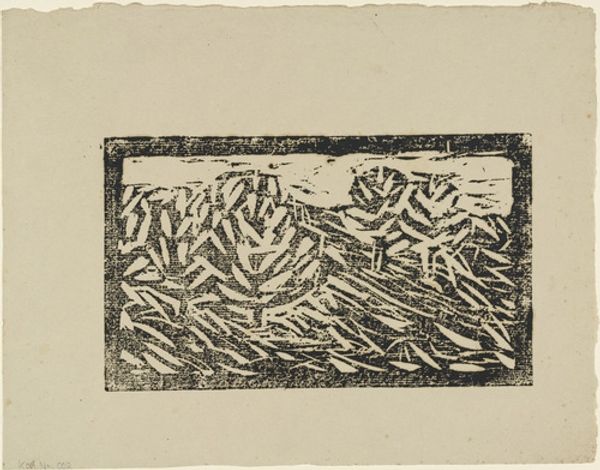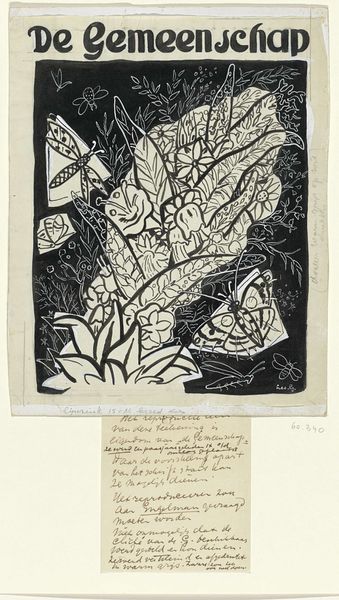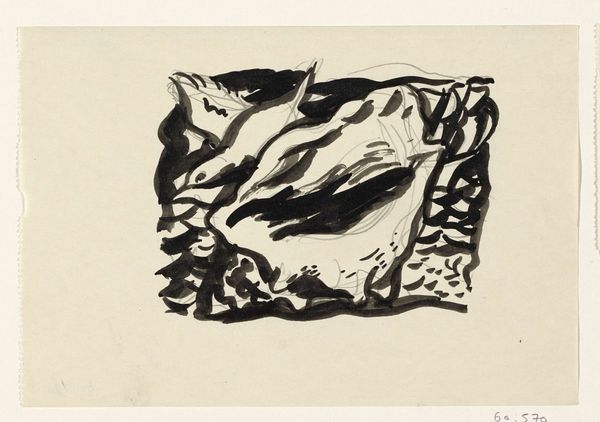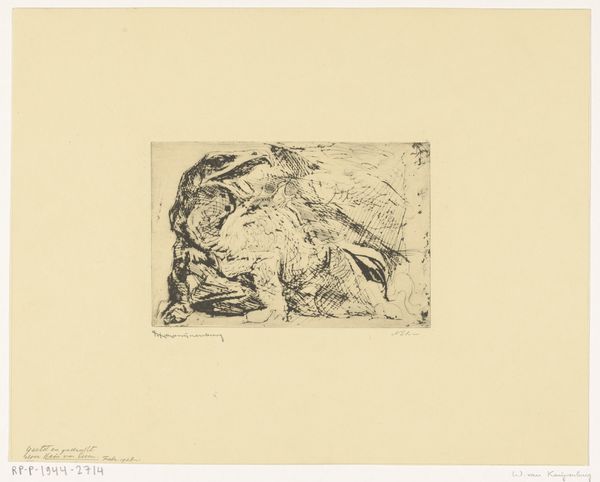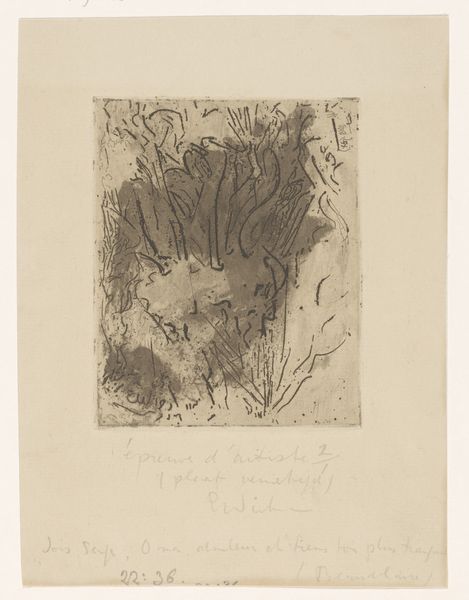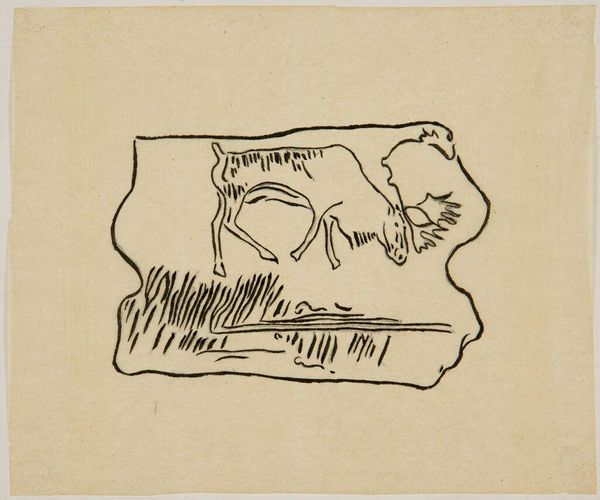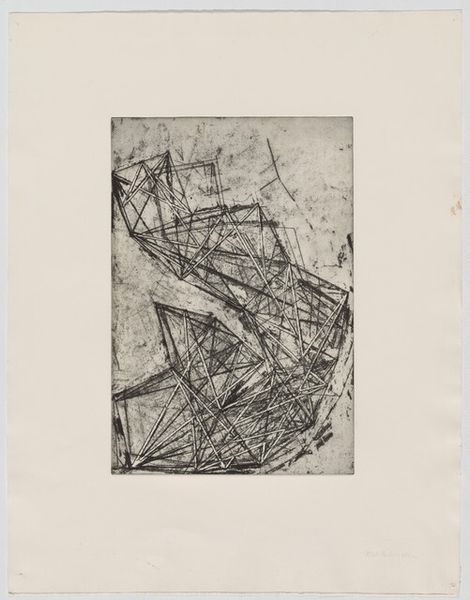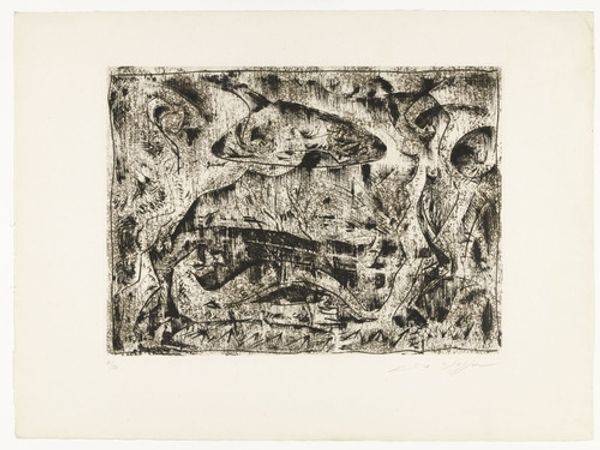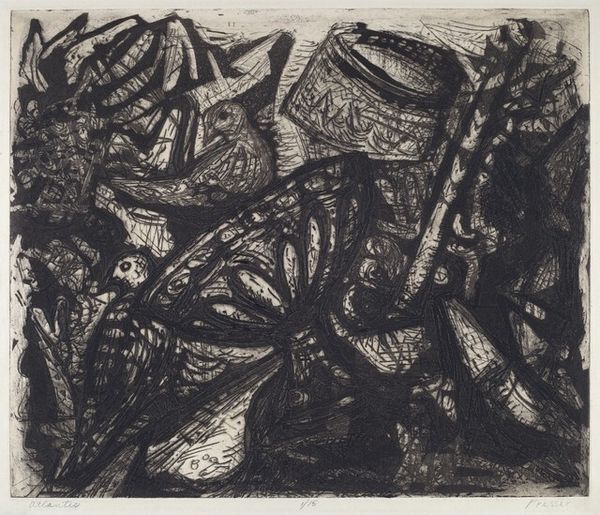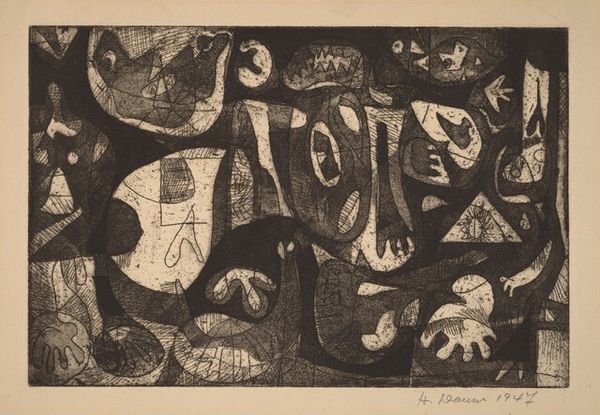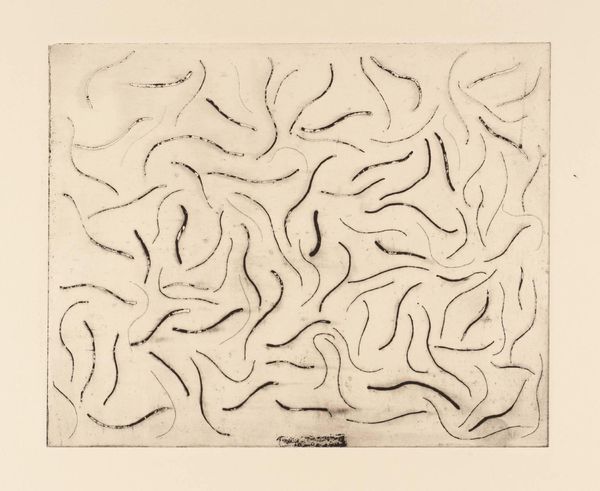
drawing, paper, ink
#
drawing
#
paper
#
ink line art
#
ink
#
abstraction
Dimensions: height 121 mm, width 149 mm
Copyright: Rijks Museum: Open Domain
Curator: Here we have "Bloemenstruik", a drawing rendered in ink on paper, made sometime between 1891 and 1941 by Leo Gestel. It’s part of the Rijksmuseum's collection. What strikes you most about it? Editor: The sheer density. At first glance, it feels almost claustrophobic, like a visual representation of being overwhelmed. The black ink creates a stark contrast against the paper. It's interesting how the artist has approached what is clearly supposed to be nature but seems quite disturbed. Curator: The perceived sense of unease likely stems from Gestel’s radical simplification of form. Instead of botanical accuracy, he’s prioritizing symbolic representation. These flower clusters, rendered as almost harsh, geometric forms, tap into our pre-existing cultural understanding of what "flower" signifies and twists it. What would have been an organic scene transforms into something angular, severe, and even masculine, given its assertive linework. Editor: Yes, I think the geometric simplification and abstraction make it difficult to interpret. Was the artist influenced by modern ideas about geometry? And I am curious: what statements were he intending to express through his composition? Are we intended to think that "nature" in its undisturbed or raw state feels unsettling or unwelcome to Gestel? Or does he suggest other aspects? Curator: Absolutely, considering this piece resides roughly within the era of increasing industrialization, there's a clear echo of a shifting worldview—nature not as a source of idyllic beauty but something reconfigured and possibly menaced by progress. It might be viewed as a critique of that disconnect. It's worth noting, Gestel later incorporated more overtly cubist elements into his oeuvre; here, the symbolic foundation is equally relevant as it serves as his response to modernity. Editor: So, this work serves as an interesting dialogue point between societal tensions and aesthetic interpretations. Thank you for illuminating it! Curator: My pleasure; hopefully this opens another way for people to consider Gestel's evolving iconography.
Comments
No comments
Be the first to comment and join the conversation on the ultimate creative platform.
